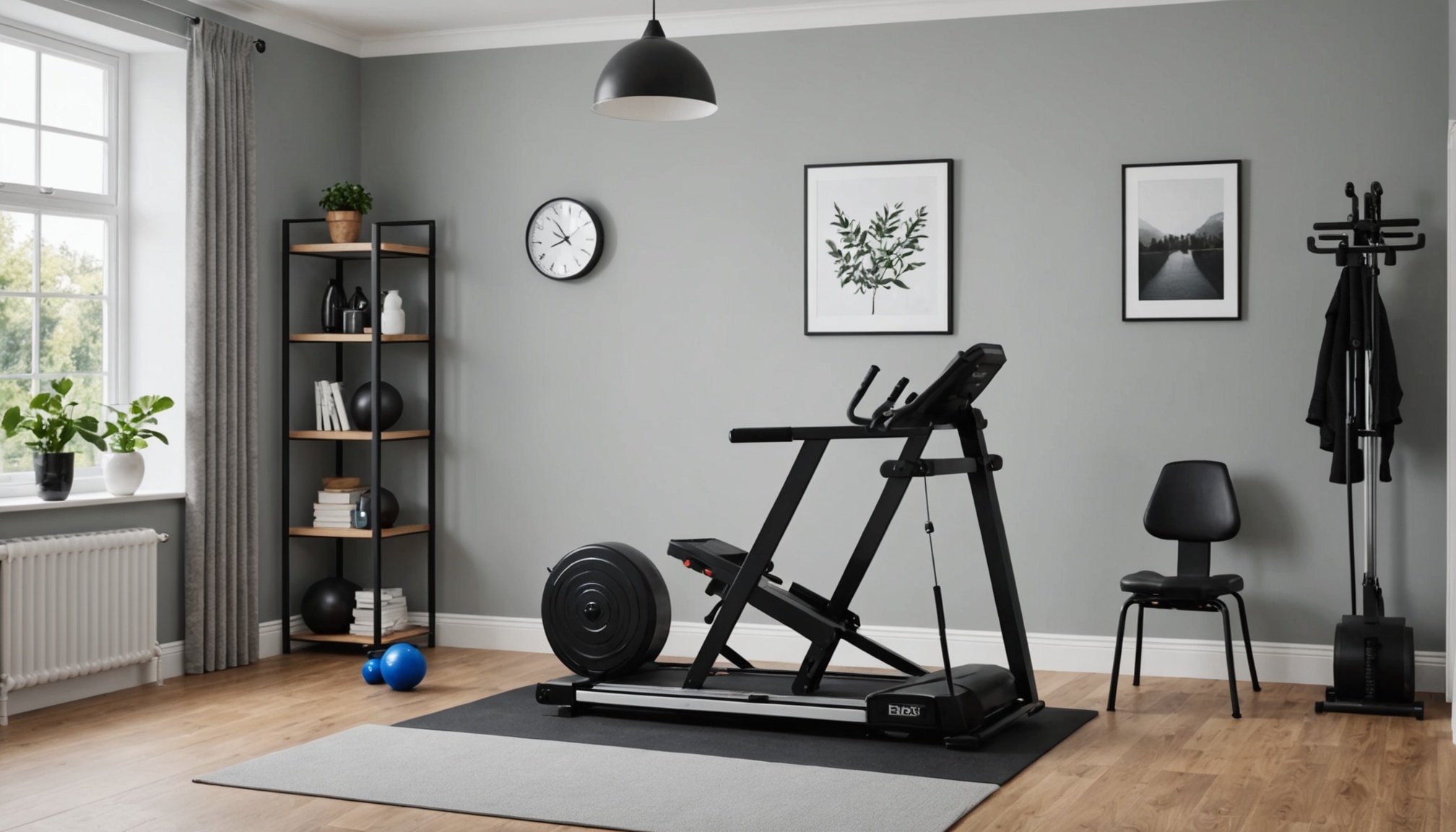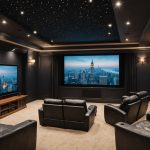Understanding the Benefits of a Home Gym
Owning a home gym brings numerous advantages, especially for UK homeowners seeking convenience. First, consider the time and cost savings: No need to commute to a gym or pay for memberships. Over time, this financial relief adds up significantly.
Home gyms also provide flexibility in workout scheduling. No longer bound by a gym’s opening hours, you can exercise whenever it suits your routine. This flexibility is particularly beneficial for those with unpredictable schedules or familial obligations, as it ensures fitness remains a priority without logistical conflicts.
This might interest you : Stay hydrated: top large insulated water bottles reviewed
Another significant benefit is the enhanced privacy and comfort of exercising at home. Unlike public gyms, there’s no waiting for machines or concern over perceived judgments from others. This setting allows you to focus solely on your fitness goals, fostering a more personalised and comfortable environment.
In summary, a home gym provides UK homeowners with a mix of fitness convenience and cost-efficiency. With time-saving and flexible workout scheduling, complemented by a comfortable, private exercise space, home gyms make fitness more accessible and enjoyable. Embrace these benefits to maintain consistent and effective workout practices at home.
In parallel : Maximizing Efficiency: A Homeowner’s Guide to Integrating Solar Thermal Panels with Current Hot Water Systems in the UK
Assessing Your Space for a Home Gym
Creating a home gym requires careful consideration of space. Start by evaluating the available areas in your home, identifying spots that can fit your gym setup without disrupting daily activities. Living rooms, basements, or even garages can serve as effective spaces.
When planning a UK home setup, consider multifunctional spaces. Your home gym need not be a dedicated room; it can seamlessly blend with your existing home environment. For instance, use foldable equipment that can be stored away after workouts. This approach maximises space utilisation and maintains the aesthetic of your home.
For those with limited room, explore tips for optimising small spaces. Vertical storage solutions can hold weights and resistance bands. Wall-mounted shelves and hooks can keep equipment organised and accessible. Additionally, select compact equipment designed for small areas, like foldable treadmills or adjustable dumbbells. Prioritising space utilisation and smart planning ensures a functional and inviting home gym space assessment, allowing you to enjoy workouts without compromising on your home’s layout.
Essential Equipment for Cardio and Strength Training
Outfitting your home gym with the right equipment is key to achieving a well-rounded fitness routine. Home gym equipment can be categorised into two primary types: cardio machines and strength training gear. For those focusing on cardiovascular exercises, consider investing in compact machines that suit your space and needs. Treadmills, stationary bikes, or elliptical trainers are popular choices that provide effective workouts without requiring excessive room.
Transitioning to strength training essentials, it’s beneficial to have versatile options like adjustable dumbbells, resistance bands, and a sturdy bench. These items offer flexibility in resistance levels and exercise variations, making them ideal for both beginners and seasoned weightlifters.
When budgeting for your home gym, explore tips for budget-friendly equipment choices. Look for quality secondhand items which may offer significant savings while maintaining durability. Platforms like local classifieds or dedicated fitness equipment sites often have excellent deals. By prudently selecting equipment, UK homeowners can create a home gym that promotes comprehensive fitness while remaining cost-effective. Embrace these suggestions to optimise your workout regime and make informed decisions on essential equipment for your fitness journey.
Designing a Versatile Home Gym Layout
Designing a versatile home gym layout to suit varied workout routines is crucial. To start, create distinct zones for different types of exercises. You might allocate specific areas for cardio, strength training, and flexibility workouts, enhancing functionality. This separation helps maintain order and maximises your workout efficiency.
In addition, ensure your UK gym layout includes optimal lighting and ventilation. Natural light can invigorate workouts, boosting your mood and energy levels. Incorporating good airflow with fans or open windows ensures a comfortable environment, particularly during intense sessions.
Consider personalisation to inspire motivation. Choose colours, decor, or motivational posters that resonate with you. A tailored space can encourage you to engage and enjoy workouts.
Furthermore, address functional spaces by selecting equipment that complements your gym design. For instance, wall-mounted racks or foldable machines enable better space utilisation, while mirrors aid in maintaining form and technique.
By combining effective zoning with personal touches and practical equipment placement, you transform a basic area into a motivating and efficient home gym. Proper home gym design nurtures a dedicated fitness space where UK homeowners can thrive physically and mentally.
Addressing Common Challenges in Home Gym Creation
Creating a home gym brings unique challenges. Many UK homeowners face space limitations. Overcoming this requires organization strategies to make efficient use of available room. Consider multi-functional furniture, such as ottomans with storage, or collapsible equipment that easily tucks away. Vertical storage solutions also maximise floor space.
Maintaining workout motivation can be difficult without external accountability. Combat this by setting specific fitness goals and celebrating small achievements. Implement regular workout schedules, and perhaps invite family members to join, fostering a sense of community and shared commitment. Additionally, diversifying your exercises maintains interest and stimulates different muscle groups.
Noise is another concern, especially in residential areas. To address this, employ rubber flooring or mats to dampen sound and protect floors from equipment. Consider positioning your gym in a detached area if possible, like a garage, to reduce noise impact on the main living spaces. Alternatively, acoustic foam panels can aid in soundproofing.
By addressing these home gym challenges, UK homeowners can optimise their setups for a conducive exercise environment, ensuring long-term fitness success.
Incorporating Smart Technology into Your Home Gym
Incorporating smart technology transforms a home gym into an innovative fitness space. With advanced fitness technology, tracking and improving workouts is more accessible than ever. Fitness apps and trackers provide essential insights into workout routines, making goal management more effective. Sync these devices with your workouts to monitor metrics like calories burned and heart rate, keeping track of your fitness progress seamlessly.
Fitness Apps and Tracking
Using fitness apps on smart devices allows for personalised workout plans and progress tracking. These apps can adapt to your goals, offering workouts that suit your level and preferences, making it easier to maintain motivation and consistency.
Smart Equipment Benefits
Invest in smart workout machines to further enhance your home gym. These machines offer real-time feedback and personalised training programs, elevating your exercise experience. They can adjust resistance or speed based on your performance, ensuring effective workouts tailored to your ability.
Online Classes and Resources
Accessing online classes and resources is another advantage of integrating smart technology. Numerous platforms offer virtual training sessions, providing high-quality guidance and support. Engage with expert instructors from the comfort of your home gym, following the latest UK fitness trends for diverse and exciting workouts.
Legal and Safety Considerations for Home Gyms
Creating a home gym involves more than selecting equipment and design. UK homeowners must also consider the legal and safety aspects to ensure a smooth gym setup.
Local Regulations and Insurance Considerations
Firstly, check for any local regulations affecting home gyms. While most residential settings won’t require permits, it’s wise to confirm with local authorities. This ensures compliance and avoids potential issues later on. Additionally, consider the importance of having insurance for your home gym. Insurance can cover equipment damage and personal injury, providing peace of mind as you exercise.
Safety Tips for Equipment Setup
Prioritising equipment safety is key. Regularly inspect machines and weights for any wear and tear. Position heavy machinery on stable surfaces and securely fasten wall-mounted items. UK safety standards recommend maintaining clear walkways to prevent accidents. Don’t stack too many items in one area, as this could pose a trip hazard.
Equipment Safety Protocols
Implementing safety protocols for equipment use is also crucial. Familiarise yourself with the operational guides of your machines and ensure they are used correctly. If uncertain, consulting a professional for guidance can avert mishaps. By focusing on these vital considerations, home gym users can enjoy a secure, uninterrupted fitness journey.











